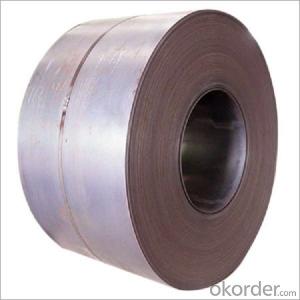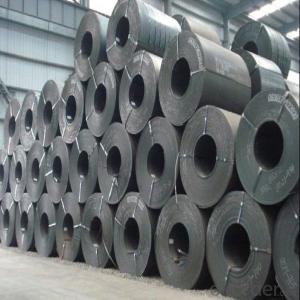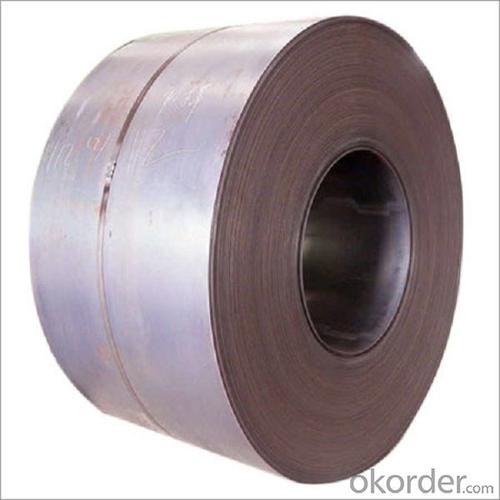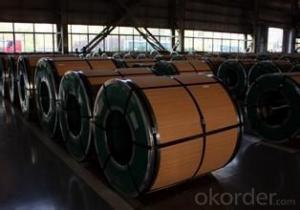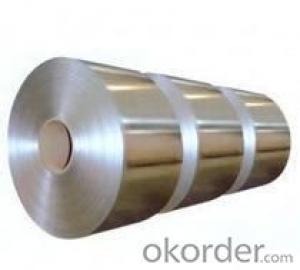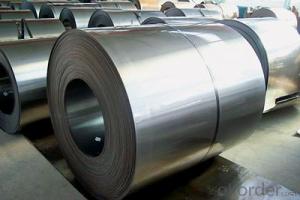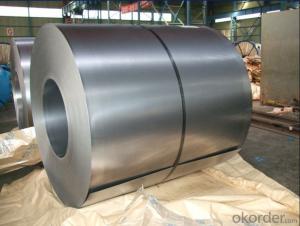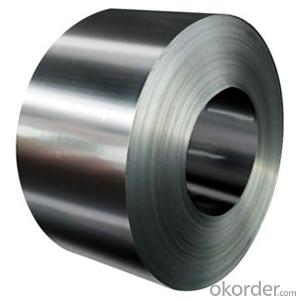Prime Cold Rolled Steel Coils in China/ Chinese supplier
- Loading Port:
- China main port
- Payment Terms:
- TT OR LC
- Min Order Qty:
- 23 m.t.
- Supply Capability:
- 50000 m.t./month
OKorder Service Pledge
OKorder Financial Service
You Might Also Like
Specification
Hot rolled steel coil
1. Specifications about stainless steel sheet
Commodity | ss 304 304L hot rolled cold rolled stainless steel coil |
Grade | 201,202,304,304L,316,316L,310S,309S,321,301,310,410,420,430,904L |
Brand | TISCO ,BAOSTEEL,POSCO,JISCO,LISCO |
Certification | SGS,BV,IQI,TUV,ISO,etc |
Thickness | 0.3-120mm or as demand |
Width | 1000-2000mm or as demand |
Length | 1000-6000mm or as demand |
Surface | No.1, 2B, BA, 8K Mirror, Hairline,satin, Embossed,brush,No.4,HL,matt,pvc film,laser film. |
Standard | ASTM,AISI,SUS,JIS,EN,DIN,GB, ASME,etc |
Delivery time | 3-5 days after confirming the order |
MOQ | 1 Ton |
Advantages | Showing the splendor of your quality, wearresistant as well , strong corrosion resistance and decorative effect, durable and beautiful in good taste. |
2. Chemical Composition about stainless steel sheet
| Grade | C | Mn(Max) | P(Max) | S(Max) | Si(Max) | Cr(Max) | Ni(Max) | Mo(Max) |
| 201 | 0.15 | 5.5-7.5 | 0.06 | 0.03 | 1 | 16.0-18.0 | 3.5-5.5 | |
| 202 | 0.15 | 7.5-10.5 | 0.06 | 0.03 | 1 | 17.0-19.0 | 4.0-6.0 | |
| 304 | 0.08 | 2 | 0.045 | 0.03 | 1 | 18.0-20.0 | 8.0-10.5 | |
| 304L | 0.03 | 2 | 0.045 | 0.03 | 1 | 18.0-20.0 | 8.0-12.0 | |
| 310S | 0.08 | 2 | 0.045 | 0.03 | 1.5 | 24.0-26.0 | 19.0-22.0 | |
| 316 | 0.08 | 2 | 0.045 | 0.03 | 1 | 16.0-18.0 | 10.0-14.0 | 2.0-3.0 |
| 316L | 0.03 | 2 | 0.045 | 0.03 | 1 | 16.0-18.0 | 10.0-14.0 | 2.0-3.0 |
| 317 | 0.08 | 2 | 0.045 | 0.03 | 0.75 | 18.0-20.0 | 11.0-14.0 | 3.0-4.0 |
| 317L | 0.03 | 2 | 0.045 | 0.03 | 0.75 | 18.0-20.0 | 11.0-15.0 | 3.0-4.0 |
| 321 | 0.08 | 2 | 0.045 | 0.03 | 0.75 | 17.0-19.0 | 9.0-12.0 | |
| 409 | 0.08 | 1 | 0.04 | 0.01 | 1 | 10.5-11.75 | 0.5 | |
| 410S | 0.08 | 1 | 0.04 | 0.03 | 1 | 11.5-13.5 | 0.6 | |
| 410 | 0.15 | 1 | 0.04 | 0.03 | 1 | 11.5-13.5 | 0.75 | |
| 420 | 0.35 | 0.5 | 0.035 | 0.015 | 0.5 | 12.0-13.0 | 0.2-3.0 |
3. Production Flow about stainless steel sheet
Raw materials are sending to hot rolling units for rolling into different sizes
Hot rolled material is annealing in cold; rolled annealing furnace and pickling in acid.
All mill rolls are grinded on precision grinding machine with proper chamfering after first shiftoperation.
All sheets are pickled in different tanks and dried on brush roll machine before dispatched.
These sheets are again annealing and are sent to straighten machine for straightening.
Inspections are done at various stages. Keep proper control overall internal process via rolling,annealin and pickling by our experienced staff.
Products Picture
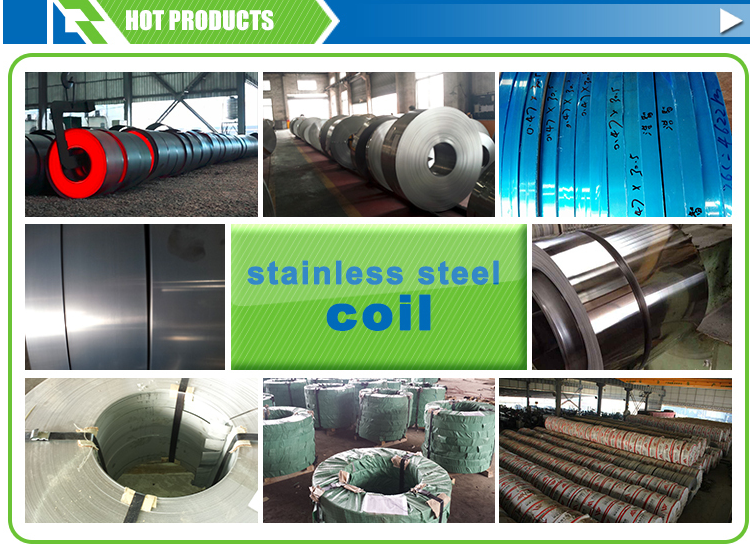
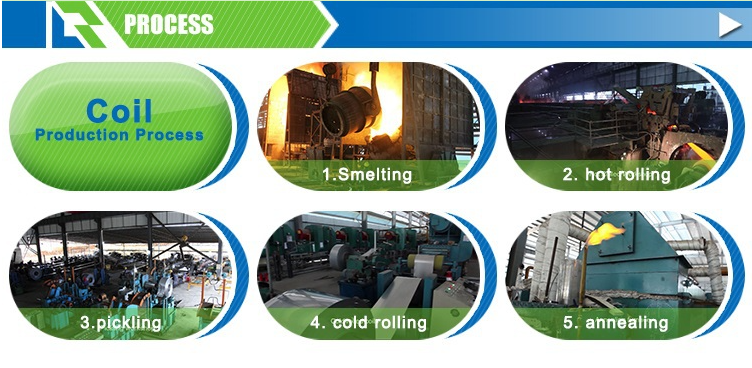
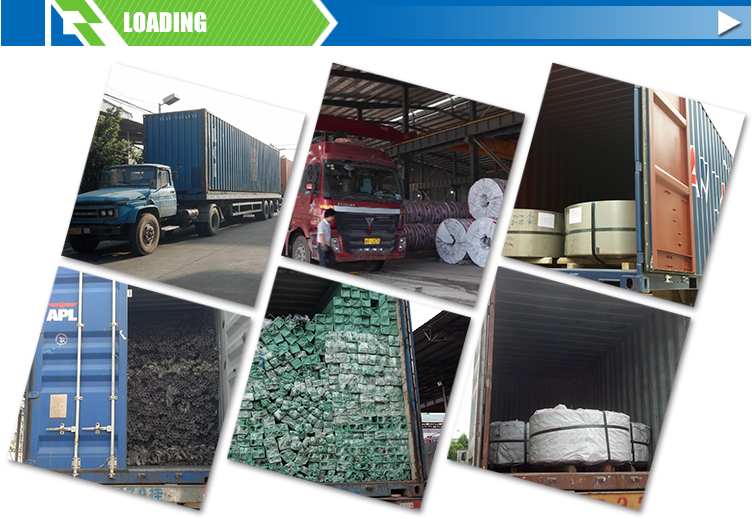
- Q: Can steel coils be coated with QR codes?
- Yes, steel coils can be coated with QR codes.
- Q: What are the different types of steel coil surface treatments for corrosion resistance?
- There are several different types of steel coil surface treatments that are used to enhance corrosion resistance. These treatments are applied to the surface of the steel coil to create a protective layer that prevents corrosion and extends the lifespan of the steel. Some of the common types of surface treatments for corrosion resistance include: 1. Galvanizing: This is one of the most popular and effective methods for protecting steel against corrosion. In this process, a layer of zinc is applied to the surface of the steel coil. The zinc acts as a sacrificial anode, corroding before the steel does, thus protecting it from rust and corrosion. 2. Chromate conversion coating: This treatment involves applying a chromate-based solution to the surface of the steel coil. The chromate forms a thin film on the steel, providing a protective barrier against corrosion. It also enhances the adhesion of paint or other coatings that may be applied later. 3. Phosphating: Phosphating is a process where a phosphate coating is applied to the steel coil. This coating provides excellent corrosion resistance by forming a chemical bond with the steel surface. It also improves the adhesion of subsequent coatings or paints. 4. Organic coatings: These coatings, such as paint or epoxy, are applied to the steel coil to create a barrier between the steel and the surrounding environment. They provide both corrosion resistance and aesthetic appeal. The choice of organic coating depends on the specific application and the desired level of corrosion protection. 5. Zinc-rich paint: Similar to galvanizing, zinc-rich paint contains a high concentration of zinc particles. When applied to the steel coil, the zinc particles provide sacrificial protection, preventing corrosion. This coating is often used in harsh environments or for steel coils that will be exposed to frequent moisture or saltwater. It is important to note that the choice of surface treatment depends on various factors such as the application, environment, budget, and required level of corrosion resistance. Consulting with a steel coil manufacturer or corrosion specialist is recommended to determine the most suitable treatment for a specific situation.
- Q: Can steel coils be coated with anti-fingerprint materials?
- Yes, steel coils can be coated with anti-fingerprint materials. These coatings are designed to minimize fingerprint smudging and make the surface easier to clean, improving the appearance and functionality of the steel coils.
- Q: How do steel coils contribute to the renewable energy sector?
- Steel coils contribute to the renewable energy sector by playing a crucial role in the manufacturing of wind turbines and solar panels. These coils are used to produce the structural components of wind turbine towers and solar panel support structures. Additionally, steel coils are also utilized in the construction of transmission lines and grid infrastructure for renewable energy projects, ensuring efficient distribution of electricity generated from renewable sources.
- Q: What are the common uses of pre-painted steel coils?
- Pre-painted steel coils are commonly used in various industries such as construction, automotive, and appliances. They are utilized for manufacturing roofing and wall panels, garage doors, ductwork, and other building components. In the automotive sector, pre-painted steel coils are employed to produce body panels, trims, and other exterior parts. Additionally, they find applications in the manufacturing of household appliances like refrigerators, washing machines, and ovens.
- Q: What is the maximum length of a steel coil?
- The maximum length of a steel coil can vary depending on various factors such as the manufacturing process, transportation limitations, and storage capabilities. However, it is common for steel coils to have a maximum length of around 30 meters (100 feet) or even longer in some cases.
- Q: What are the different types of steel coil edge conditions?
- There are several different types of steel coil edge conditions, each designed to meet specific requirements and applications. The most common types include: 1. Mill Edge: Mill edge is the default edge condition for hot-rolled steel coils, where the edges are left as they come out of the rolling process. This edge condition is characterized by a slightly rough and uneven surface. 2. Slit Edge: Slit edge is created by cutting the coil along its width to achieve narrower strips. This edge condition is typically smoother and more uniform than mill edge, making it suitable for applications where a clean and precise edge is required. 3. Trimmed Edge: Trimmed edge is achieved by removing irregularities and imperfections from the edges of the coil. This process results in a straight and smooth edge, making it suitable for applications where a precise and uniform surface is necessary. 4. Deburred Edge: Deburred edge is created by removing burrs or sharp edges from the coil. This edge condition is commonly used in applications where safety is a concern, as it eliminates any potential hazards associated with sharp edges. 5. Round Edge: Round edge is achieved by rounding the corners of the coil. This edge condition is often employed in applications where the material needs to be easily handled or when there is a need to prevent damage to other materials or surfaces. 6. Slit and Deburred Edge: Slit and deburred edge combines the benefits of both slit edge and deburred edge conditions. It involves cutting the coil to achieve narrower strips and then removing any burrs or sharp edges, resulting in a clean and safe edge. Each of these edge conditions serves a specific purpose and is chosen based on the requirements of the application. By understanding the different types of steel coil edge conditions, one can select the most suitable option to ensure optimal performance and safety.
- Q: How do steel coils contribute to the manufacturing of HVAC systems?
- The manufacturing of HVAC systems heavily relies on steel coils, which have a critical role. These coils typically consist of high-quality steel, known for its exceptional strength, durability, and resistance to heat. Heat exchangers are one of the primary applications of steel coils in HVAC systems. These exchangers play a vital role in transferring heat between different mediums, usually air and a refrigerant. In HVAC systems, steel coils are employed in both the evaporator and condenser coils. The evaporator coil absorbs heat from the indoor air, while the condenser coil releases heat to the external environment. These coils are designed with numerous coiled tubes connected by fins. The use of steel in their construction ensures their ability to withstand high pressure and resist corrosion, guaranteeing the long-term reliability and efficiency of the HVAC system. Steel coils also contribute to the overall structural integrity of HVAC systems. They are commonly utilized in the fabrication of ductwork, responsible for distributing conditioned air throughout a building. The strength and rigidity of steel coils enable the ductwork to maintain its shape and structural integrity under various conditions, including high air pressure and temperature fluctuations. Additionally, steel coils are frequently involved in the fabrication of HVAC system cabinets and enclosures. These cabinets house several system components, including compressors, fans, and control panels. The robustness of steel coils ensures that the cabinets can withstand external forces, protect the internal components, and provide a secure housing for the entire HVAC system. To summarize, steel coils are crucial components in the manufacturing of HVAC systems. Their strength, durability, and heat resistance make them ideal for applications such as heat exchangers, ductwork, cabinets, and enclosures. By incorporating steel coils, HVAC manufacturers can produce systems that efficiently regulate temperature, enhance indoor air quality, and provide comfort in various residential, commercial, and industrial settings.
- Q: How are steel coils used in the manufacturing of chassis frames?
- Steel coils are used in the manufacturing of chassis frames by being shaped and welded to form the structural backbone of vehicles. These coils are typically cut and pressed into specific shapes to create the necessary strength and rigidity required for chassis frames.
- Q: steel welding with ms steel iron
- Welding austenitic stainless steels to carbon and low alloy steels are established methods in the process and construction industries. Dissimilar metal welds involving stainless steels can be done using most full fusion weld methods, including TIG (Tungsten Inert Gas) and MIG (Metal Inert Gas). Weld procedures using filler (consumable) enable better control of joint corrosion resistance and mechanical properties. In selecting the weld filler, the joint is considered as being stainless, rather than the carbon steel. Over-alloyed fillers are used to avoid dilution of the alloying elements in the fusion zone of the parent stainless steel.
Send your message to us
Prime Cold Rolled Steel Coils in China/ Chinese supplier
- Loading Port:
- China main port
- Payment Terms:
- TT OR LC
- Min Order Qty:
- 23 m.t.
- Supply Capability:
- 50000 m.t./month
OKorder Service Pledge
OKorder Financial Service
Similar products
Hot products
Hot Searches
Related keywords
